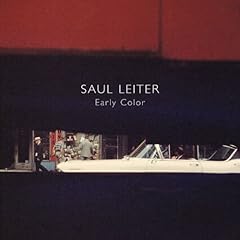From The Enterprise of Seeing, a manuscript of poems based on the photography of Saul Leiter.
Q: When I was younger, we had you in pictures.
A book my father kept.
In my father’s book you are sitting on a stone talking to Abraham. Your arm is raised and
you wear a gown of great folds piled at your feet.
This seems to me still true—that we access you through the image.
And what is the image?
How is it created and apprehended?
Do we amass it in planes? Do we break it into fragments? Do we look through it, a lens bent
at our human angle?
But if we look through it, how do we account for the surface and its loveliness?
Moreover, how do we account for depth, the way the image recedes like a fish darting
deeper into the dark?
A: A woman shattered herself
in a store window
reflecting tiles,
the tiles reflecting a chandelier
shaking in the wind
of her blue raincoat.
Q: And to what altar do I take these uncertainties?
A: Take them to Times Square.
Take them there at noon,
take them there at four am.
Go at dusk: Rush hour.
Then she disgorges commuters.
They scattered into shadows—
minnows in a reedbed,
beads fleeing from a snapped string,
the sea receding into private murmuring,
her voice when she cradles the phone
into the bedroom and you stand
in the kitchen straining to catch
the inflection, how she is sad sometimes
in the rain when you return shaking silver
from your coat, how she is sad and insistent,
not catching your joy at rain-ribbed cars,
how her voice grows quieter
as the door closes, scattering into shadows
of vowels that open like chambers in your heart,
racing with the strain of listening.
Q: I looked.
I looked and looked.
I looked at noon, and looked at four a.m.
I looked at dusk, looked at dusk scattering.
Later I returned. Saw the red wisdom of the pool hall nodding quietly on.
Notes
Click the image below to purchase a book containing the photography of Saul Leiter, the artist whose work inspired this poem. By purchasing this book, or any other, during your visit to Amazon.com you will help support The Other Journal.
